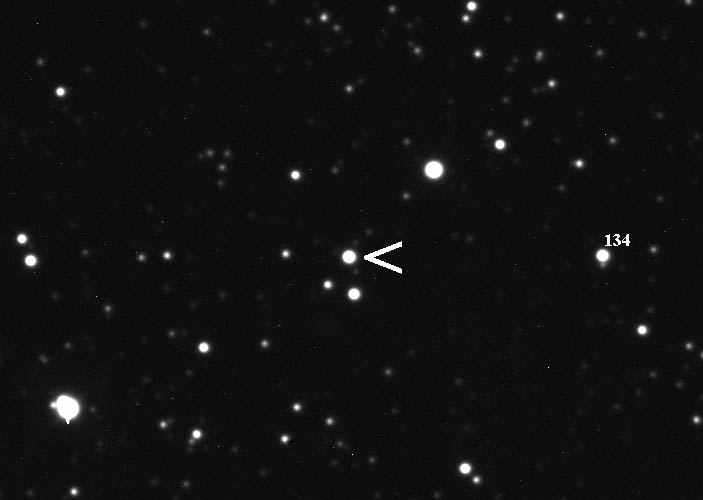Z Camelopardalis Star on:
[Wikipedia]
[Google]
[Amazon]
 A U Geminorum-type variable star, or dwarf nova (pl. novae) is one of several types of
A U Geminorum-type variable star, or dwarf nova (pl. novae) is one of several types of
 A U Geminorum-type variable star, or dwarf nova (pl. novae) is one of several types of
A U Geminorum-type variable star, or dwarf nova (pl. novae) is one of several types of cataclysmic variable star
In astronomy, cataclysmic variable stars (CVs) are stars which irregularly increase in brightness by a large factor, then drop back down to a quiescent state. They were initially called novae (), since ones with an outburst brightness visible to ...
, consisting of a close binary star
A binary star is a system of two stars that are gravitationally bound to and in orbit around each other. Binary stars in the night sky that are seen as a single object to the naked eye are often resolved using a telescope as separate stars, in wh ...
system in which one of the components is a white dwarf that accretes matter from its companion. Dwarf novae are dimmer and repeat more frequently than "classical" novae.
Overview
The first one to be observed wasU Geminorum
U Geminorum (''U Gem''), in the constellation Gemini, is an archetypal example of a dwarf nova. The binary star system consists of a white dwarf closely orbiting a red dwarf. Every few months it undergoes an outburst that greatly increas ...
in 1855; however, the mechanism was not known till 1974, when Brian Warner showed that the nova is due to the increase of the luminosity of the accretion disk. They are similar to classical nova
A nova (plural novae or novas) is a transient astronomical event that causes the sudden appearance of a bright, apparently "new" star (hence the name "nova", which is Latin for "new") that slowly fades over weeks or months. Causes of the dramati ...
e in that the white dwarf is involved in periodic outbursts, but the mechanisms are different. Classical novae result from the fusion and detonation of accreted hydrogen on the primary's surface. Current theory suggests that dwarf novae result from instability in the accretion disk, when gas in the disk reaches a critical temperature that causes a change in viscosity, resulting in a temporary increase in mass flow through the disc, which heats the whole disc and hence increases its luminosity. The mass transfer from the donor star is less than this increased flow through the disc, so the disc will eventually drop back below the critical temperature and revert to a cooler, duller mode.
Dwarf novae are distinct from classical novae in other ways; their luminosity
Luminosity is an absolute measure of radiated electromagnetic power (light), the radiant power emitted by a light-emitting object over time. In astronomy, luminosity is the total amount of electromagnetic energy emitted per unit of time by a st ...
is lower, and they are typically recurrent on a scale from days to decades. The luminosity of the outburst increases with the recurrence interval as well as the orbital period; recent research with the Hubble Space Telescope suggests that the latter relationship could make dwarf novae useful standard candles for measuring cosmic distances.
There are three subtypes of U Geminorum star (UG):
* SS Cygni stars (UGSS), which increase in brightness by 2-6 mag in V in 1–2 days, and return to their original brightnesses in several subsequent days.
* SU Ursae Majoris
SU Ursae Majoris, or SU UMa, is a close binary star in the northern circumpolar constellation of Ursa Major. It is a periodic cataclysmic variable that varies in magnitude from a peak of 10.8 down to a base of 14.96. The distance to th ...
stars (UGSU), which have brighter and longer "supermaxima" outbursts, or "super-outbursts," in addition to normal outbursts. Varieties of SU Ursae Majoris star include ER Ursae Majoris
ER Ursae Majoris is a variable star in the northern circumpolar constellation of Ursa Major, abbreviated ER UMa. It is a prototype system for a subclass of SU Ursae Majoris dwarf novae. The system ranges in brightness from a peak appare ...
stars and WZ Sagittae
WZ Sagittae (''WZ Sge'') is a cataclysmic variable, cataclysmic dwarf nova star system in the constellation Sagitta (constellation), Sagitta. It consists of a white dwarf primary being orbited by a low mass companion. The white dwarf is ...
stars (UGWZ).
* Z Camelopardalis
Z Camelopardalis (Z Cam) is a cataclysmic variable star system in the northern constellation of Camelopardalis. It has an apparent visual magnitude which varies between 9.8 and 14.5. This system is the prototype star for the f ...
stars (UGZ), which temporarily "halt" at a particular brightness below their peak.
In addition to the large outbursts, some dwarf novae show periodic brightening known as “superhump
In astronomy, a superhump is a periodic brightness variation in a cataclysmic variable star system, with a period within a few percent of the orbital period of the system.
History
Superhumps were first seen in SU Ursae Majoris (SU UMa) stars, a ...
s”. They are caused by deformations of the accretion disk
An accretion disk is a structure (often a circumstellar disk) formed by diffuse material in orbital motion around a massive central body. The central body is typically a star. Friction, uneven irradiance, magnetohydrodynamic effects, and other fo ...
when its rotation is in resonance with the orbital period of the binary.
References
External links
* * * * {{Authority control Astronomical events Binary stars